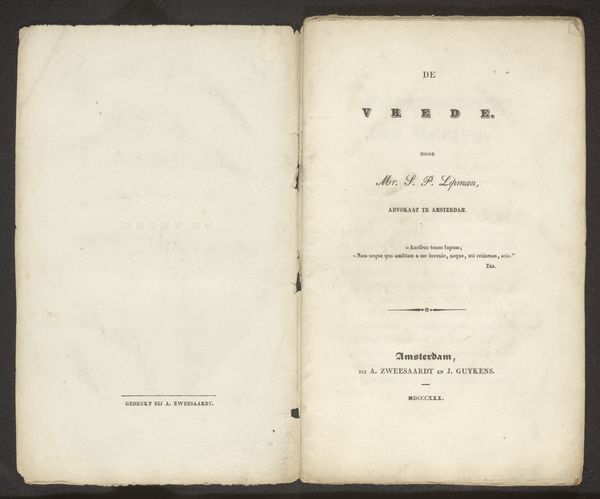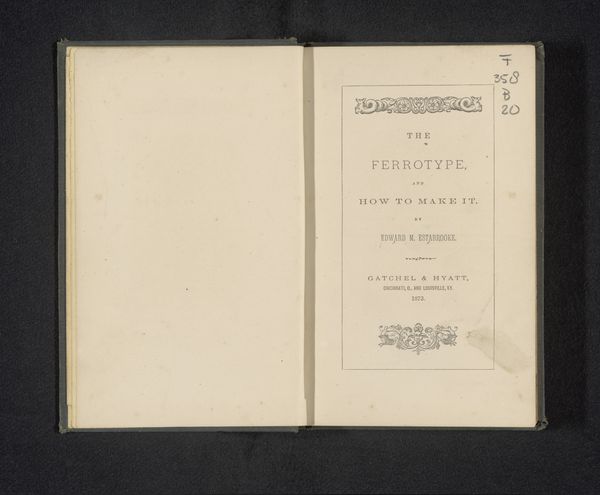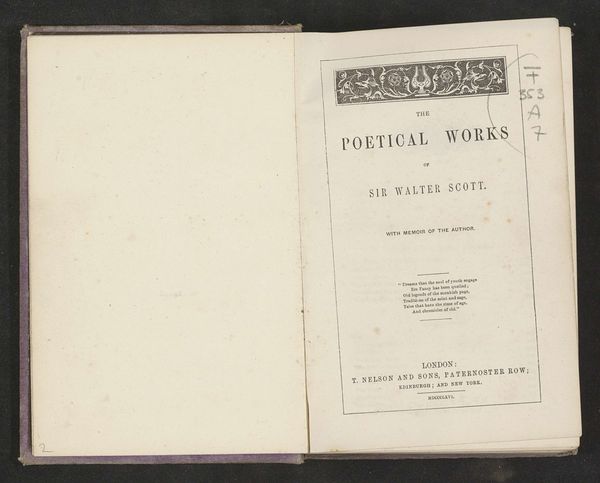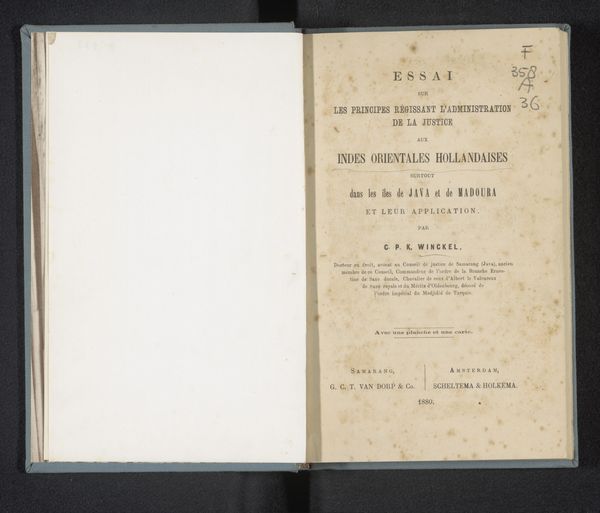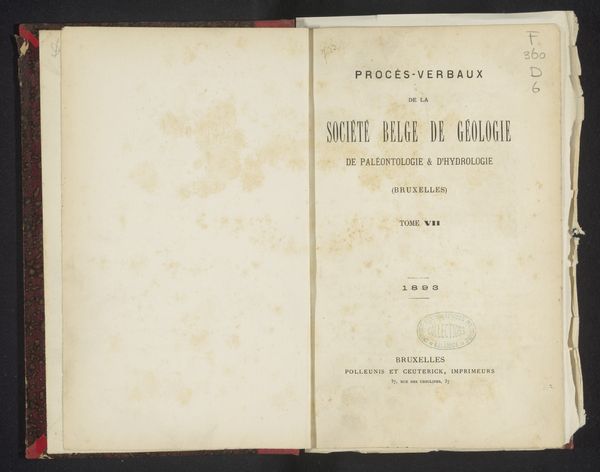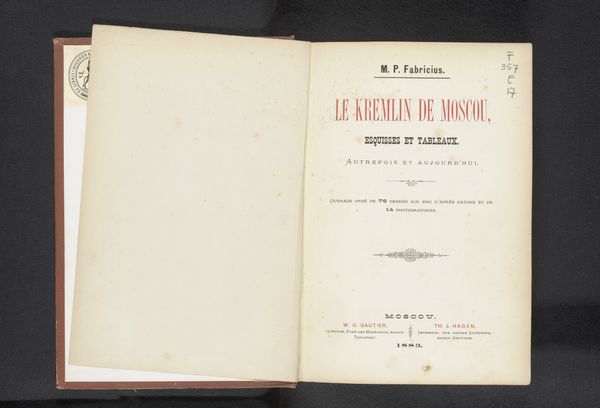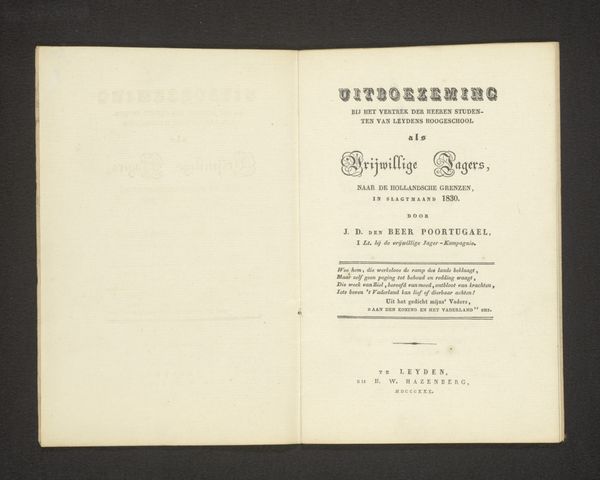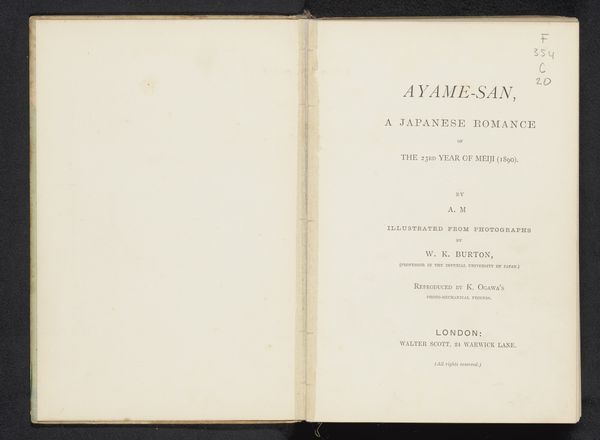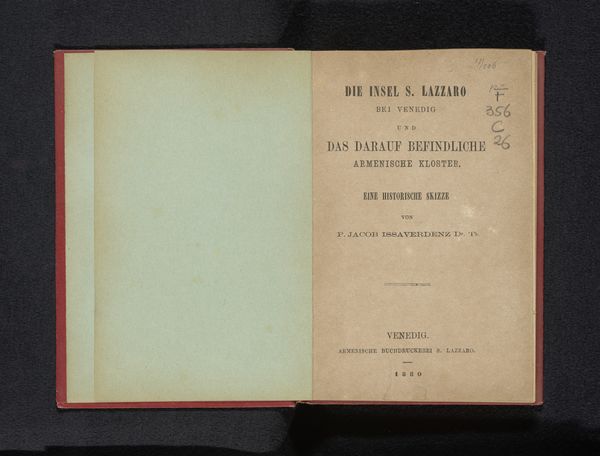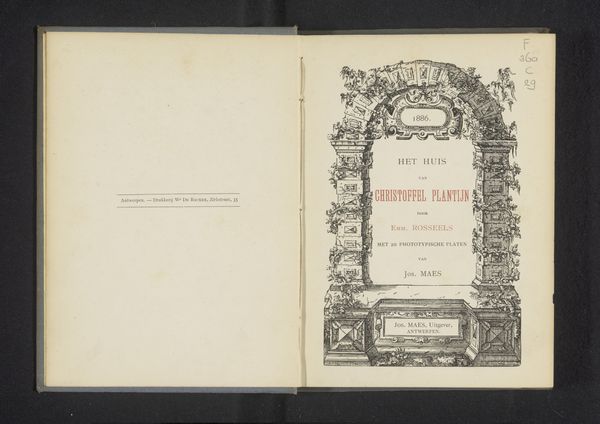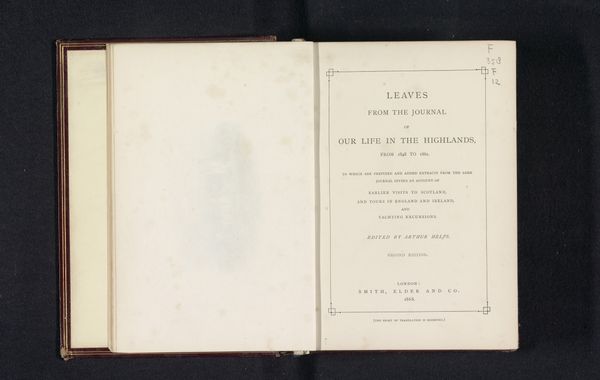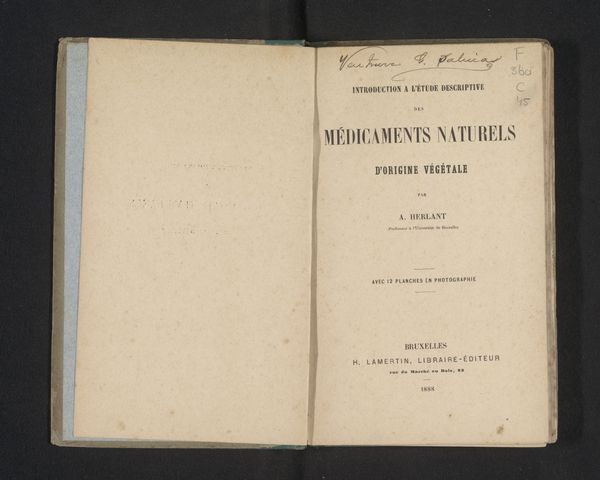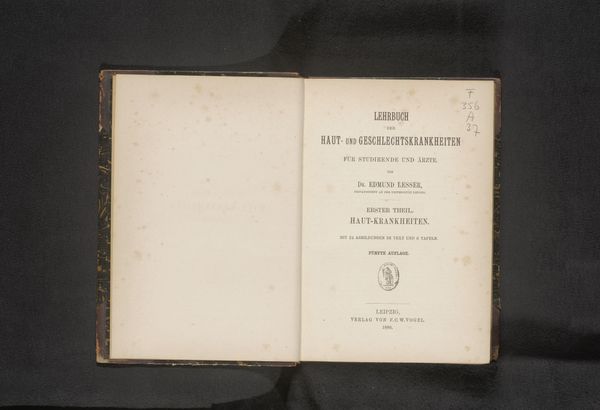
Dimensions: height 175 mm, width 121 mm, thickness 13 mm
Copyright: Rijks Museum: Open Domain
Editor: Here we have "Flora: jaarboekje voor Neerlands vrouwen en dochters," a publication from 1876 by A. Akkeringa. It appears to be a book of some kind. The typography and aged paper give it a lovely antique feel. What can you tell me about it? Curator: This piece, beyond its aesthetic appeal, provides a window into the construction of gender roles in 19th-century Netherlands. The title translates to "Flora: Yearbook for Netherlands Women and Daughters." Consider the term "yearbook"—what sort of content was deemed appropriate, or even necessary, for women and daughters of that era? We must ask ourselves, what ideologies were being subtly, or not so subtly, transmitted through its pages? Editor: So, it's not just a pretty object but a historical artifact. Were these yearbooks common? Curator: Precisely. And yes, publications marketed specifically to women were becoming increasingly prevalent. Think about the social context: what were the expectations for women's education, their roles in the family and society, their access to professions? The "Flora" yearbook likely reinforced specific ideals of womanhood. Is that something you find interesting? Editor: Definitely. It makes you wonder what messages were hidden in plain sight. Perhaps the types of poems and stories and advice that would have been contained in here. Curator: Exactly! And who was A. Akkeringa? Was this person a man or a woman? What was their agenda? Who benefited from disseminating this kind of material? By looking closer we can understand the power dynamics at play and the historical forces shaping women’s identities. Editor: It’s amazing how one image can open up so many questions. I’ll definitely be looking at these kinds of artifacts with new eyes now. Curator: As you should! By thinking critically, and by examining these works within their historical context, we are challenging existing narratives and amplifying marginalized voices from the past. That, to me, is incredibly exciting!
Comments
No comments
Be the first to comment and join the conversation on the ultimate creative platform.
